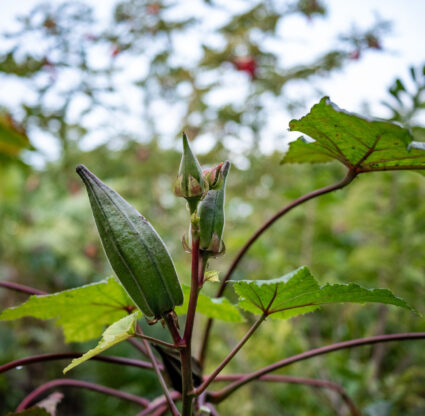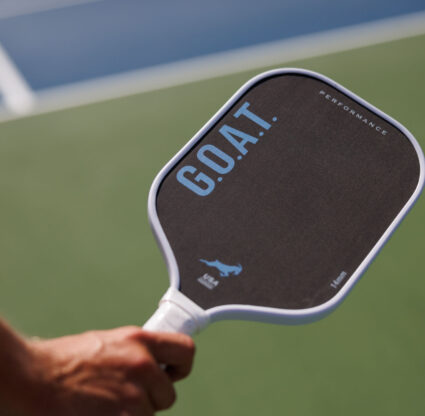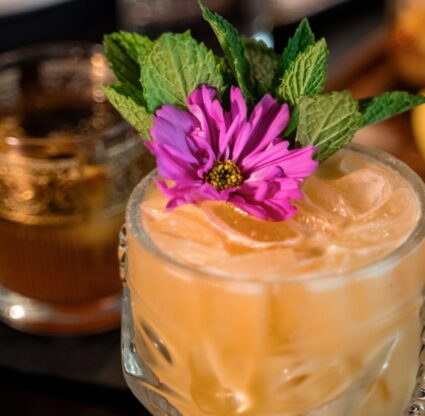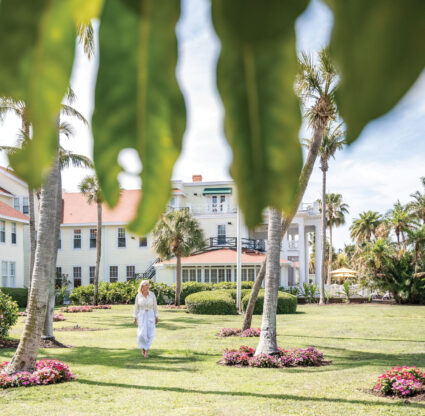OK, I’m gonna put the hook in the vise. We want the shank parallel to the floor … The next thing we’re gonna figure out is what size eyes we want. The eyes will affect the sink rate.”
I am sitting in the home workshop of Drew Chicone, saltwater fly-tying master, watching him create a salmon-colored imitation shrimp to attract fish. He wraps thread around the hook to form a body, secures little black bead chain eyes and adds silicone legs to mimic the crustacean’s anatomy, sparkling fibers for attention-grabbing shimmer and rabbit fur to regulate the fly’s movement. He snips the thread end and secures it with acrylic. “OK, your turn,” he says, exchanging places with me.
Fly fishing is the art of catching a fish using a fly—a handmade replica of a fish’s prey, like baitfish, crabs, shrimp or insects. It’s my first experience with the sport, and I’m learning from the guy. From his Fort Myers base, Drew shares his knowledge and innovations to advance saltwater fly fishing, a contemporary—and rapidly growing—offshoot of the centuries-old freshwater pastime. The fisherman’s fly designs have won major industry awards; he’s published numerous magazine articles, authors a free monthly e-newsletter and has written a three-volume, 900-page tome on fly fishing. The day after my lesson, the December issue of Fly Tyer magazine hit shelves. The publication named him Fly Tyer of the Year and featured his flies on the cover—an angler’s equivalent to landing in Rolling Stone (Drew’s analogy).
Drew’s been at this since he stumbled upon his parents’ fly-tying materials in the basement of their upstate New York home when he was about 6. The box was a treasure chest—scraps of fur, feathers, tinsel, thread, a few of his dad’s flies and his mom’s handwritten notes. He still has the notes, stuffed between the pages of Art Flick’s Master Fly-Tying Guide, a gift from his grandmother to his dad.
Something stuck. Drew, a restless kid, loved arts and crafts, especially origami. He was obsessed with fishing. “It was like the sky opened up,” he says of the day he figured out that he could marry his hobbies and make his own lures.
“I think I have my first fly I ever tied with my dad,” he continues, rummaging. “Here it is.” He hands me two, grinning: a delicate mosquito imitation (Dad’s) and a blood-sucker-on-steroids version (his). “I mean, everybody’s got to start somewhere, right?”
Despite his love for fishing, Drew—like most of us—did not think a childhood passion equated to a grown-up job. He pursued a pragmatic career in the mortgage, title and real estate industry. He founded his own company, working so hard that he landed in a cardiologist’s office in his mid-20s. Diagnosis: stress. He shuttered the firm in 2007. “What are you going to do now?” he recalls his wife, Susan, asking. “I’m not 100% sure,” he responded. “But somehow, I’m gonna work in the fly-fishing industry.”
For a time, he continued to work in various industries like banking and supply-chain consulting. But all the while, he studied and practiced fly tying, handcrafting as many as 5,000 flies a year to perfect the art, gain a following and amass inventory to sell. The sport tends to attract obsessives. In an extreme example, an American student studying abroad broke into the Natural History Museum at Tring near London in 2009 and stole feathers and bird pelts for fly tying. Drew crosses no such ethical boundaries, but he’ll scour rummage sales and internet boards for hard-to-find and discontinued products, like a square rubber leg that looks more realistic than today’s rounded silicone products, or Aunt Lydia’s Rug Yarn, coveted for its texture, natural-looking sparkle and ability to hold its shape when wet.
Drew’s workshop is the envy of any crafter. Storage bins line the walls. They’re crammed with fur, feathers, wool, shredded Mylar, foam board, beads, marabou feathers, thread and countless other materials. “You know it’s bad when you go into Michael’s or JOANN’s and the old ladies are like, ‘Hey, Drew!’”
Anything and everything is fair game in fly design. One of Drew’s award winners, Chicone’s Contraband Crab, uses a dish scouring pad, chosen for its natural color variations (fish are suspicious of things that look fake), texture, and availability, among other reasons. He makes the crab’s eyes by holding monofilament to a flame and melting the polymer into a pinhead-sized ball, which he dabs with black nail polish, and voila! Chicone’s Contraband Crab took Best in Show at the 2016 International Fly Tackle Dealer (IFTD) Show for its versatility and the niche it filled in the market.
If Drew can’t find a material that serves his needs, he may well invent it. He has conceived several products, including Chicone’s Fettuccine Foam. Drew had been wrestling with how to make a fly more buoyant. He’d tried incorporating deer hair, but it tends to sink when saturated—a problem when you’re targeting snook, which feed on prey above them. One day, over an Italian dinner with his wife, Drew glimpsed a chef feeding sheets of dough through a pasta cutter. “We gotta go!” he announced. The couple raced home. (Such epiphanies are not uncommon—he keeps a notebook on his bedside to capture middle-of-the-night inspirations). In his workshop, Drew began slicing water-resistant foam board into noodle-like strips to replace the hair and tested the flies in his backyard pool until he struck the exact number of strips needed for optimal buoyancy. Fettuccine Foam is a key component to his Tuscan Bunny fly, which won IFTD’s Best in Show in 2017.
Fly design is an art, but the practice is grounded in science. Before Drew sits down to create, he must know: what his target fish eats, where in the water column it feeds, and whether it goes after prey located above it or below it. He considers habitat types and seasonal shifts. He thinks about whether a fly should make a splash when it hits the water or land feather-like, so as not to spook the fish he’s after. He knows which species latch onto flies that merely resemble their prey and those that bite at only the most realistic imitations. Drew has even researched how fish see underwater, dedicating a section of his first book, Feather Brain, to explaining the Ultraviolet light spectrum. “I got really nerdy,” he confesses. “It’s extremely tactical, but this level of detail didn’t exist.”
If Drew did nothing more than design flies and products, he would hold a place among fly tying’s elites. He affirmed his mastery by selling to a major retailer, Umpqua Feather Merchants. But that’s not his only contribution. Drew is a gifted teacher—patient, encouraging and detailed. The New York native fell into the role of saltwater fly-fishing educator and apostle after moving to Fort Myers in 2003.
Florida is the epicenter of sport fishing in general and the place where saltwater fly fishing came into its own, thanks to a generation of fishermen who adapted casting techniques, equipment and fly design for saltwater environments. Drew, who likewise shifted from freshwater to saltwater fly fishing, recognized that the sport was ripe for development, innovation—and education.
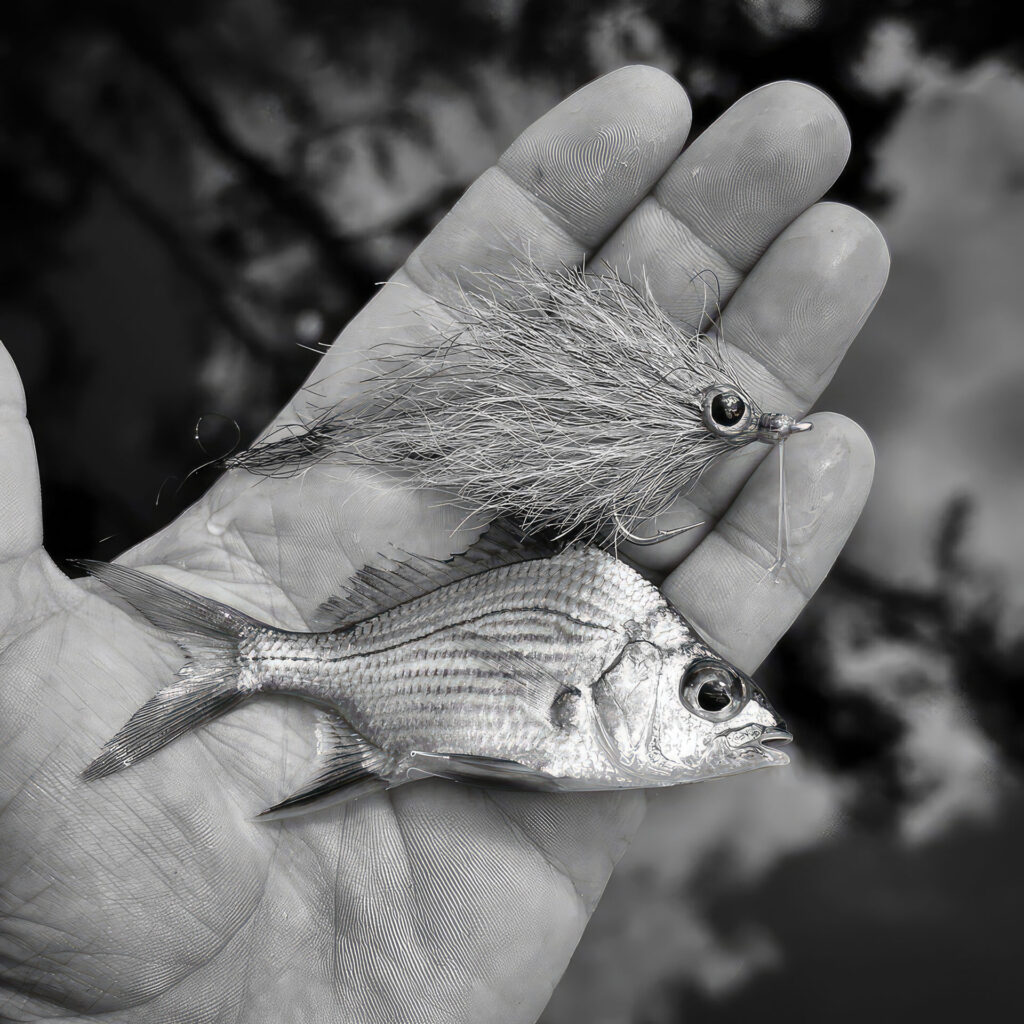
About 15 years ago, he offered fly-tying lessons to kids at Bass Pro Shops in South Fort Myers. That’s where, one evening, he encountered the late Eric Leiser, from Cape Coral, who was regarded as one of saltwater fly tying’s pioneers. Drew still remembers their first meeting. “He had a pair of plaid pants from the ’70s and a cap like the paperboys used to wear,” Drew recalls.
Eric, in his 70s at the time, was looking for a student of his own. Something about seeing the younger man at work must have resonated. “I’ll teach you everything I know,” Drew remembers him saying, “You take it from here, and keep teaching it. But you need to make me a promise. No secrets.”
Fly tyers were a cagey bunch, protective of patterns and techniques. The sport smacked of elitism and clannishness, a throwback to the Victorians, who turned fly fishing into a nobleman’s pastime. Eric wanted to change that, using Drew as a conduit.
Along with fly-tying techniques, Eric taught Drew how to write. “Explain it to me as if you couldn’t do it with pictures,” said the older man, the author of several definitive fly-tying guides. Drew published his first free newsletter in 2012, sharing what he’d learned from Eric, along with designs, tips, and time-saving tricks he developed on his own. As his following and reputation grew, he reached out to the sport’s other greats—Flip Pallot, Chico Fernandez, Lefty Kreh—to learn from them and pass on their wisdom. He expanded his writing into magazine articles and books. His next, self-published work, Bluewater Flies, releases this year.
Drew writes the way he likes to learn: Step-by-step, like a recipe book. Even though Eric sharpened his explanatory skills, Drew insists on copious photographs to enhance understanding. He documents his process in a makeshift studio, a cardboard box painted sky blue. Today, Drew estimates he reaches at least 500,000 people a year through his newsletters, website, Instagram, YouTube videos, podcasts and other publications. “It’s passing the torch to the next generation,” he says. This includes his 12-year-old daughter, Lucy, who has a tackle box of flies that she tied with her dad.
Drew balances unpaid endeavors with an amalgamation of financial ventures, from collecting royalties on his fly designs to serving as the United States distributor for a New Zealand-based rod manufacturer. He is sponsored by numerous brands, including BOTE and Patagonia, and runs a tour company, Luxe Cadre, through which he leads private excursions, revolving around fishing and hunting, fine wine, and cultural experiences, to places like the Bahamas and Argentina. And, if that’s not enough, he’s part owner of Frigate Reserve Rum, a premium spirits label developed by a group of friends who brought Drew on for his aptitude with logistics. His entrepreneurial brain is as active as his fly-tying one.
Drew likes to say: You can make a fly that looks beautiful on the bench, you can make a fly that performs, or you can make a fly that does both.
On a perfect weekday morning, we make our way through Drew’s backyard to Whiskey Creek’s tree-shadowed water. We step onto his paddleboard—he in front, me observing from behind—and glide noiselessly from his dock. The board skims the water’s surface, creating so little disturbance that the fish and manatees barely notice us. I watch him cast, turning his torso right, left, and right again, his line gaining energy with each twist. He makes it look effortless.
Drew has chosen a fly that imitates a bait fish. He casts for me, hands me the rod and shows me how to manipulate the movements to make the fly move as if wounded. “Sing ‘Three Blind Mice,’” he suggests. Tug-tug-tug. Pause. Tug-tug-tug. Pause. A little snook latches on, and I reel in my first-ever fish caught on a fly. “People get addicted to it, you know,” he warns over his shoulder.
The morning is still. Mangroves, palms and shrubs obscure neighborhoods and roadways and create solitude. “It’s no longer a craft,” he says. “It’s like a calling.”

